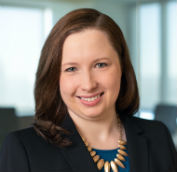DOL FFCRA Rule Revising “Health Care Provider” Definition
On September 11, 2020, the U.S. Department of Labor (DOL) issued revised temporary regulations pertaining to the emergency paid sick leave and paid family leave provisions of the Families First Coronavirus Response Act (FFCRA), following a federal court’s decision earlier this year that struck down portions of the prior regulations. The revised regulation, which went into effect on September 16, 2020, includes an updated definition of the term “health care provider” as that term is used in the context of determining an employee’s eligibility for the expanded leave.
The FFCRA permits employers to exclude “health care providers” from being eligible for expanded paid leave under the act. In the initial rule, the definition was quite broad; the new definition is now more narrowly tailored to those individuals who are either directly providing care or those whose duties are integrated into the provision of care. Under the rule, an employee is a health care provider if the employee is capable of providing health care services. Health care services include the following:
- Diagnostic services – such as taking or processing samples; performing or assisting in the performance of diagnostic tests or procedures; and interpreting such tests or procedure results.
- Preventive services – such as check-ups, screenings, and counseling to prevent illness, disease or other health problems.
- Treatment services – such as prescribing medications; providing or administering prescribed medications; physical therapy; performing surgery or other invasive or physical interventions; and providing or assisting in breathing treatments.
- Services that are integrated with and necessary to the provision of patient care and, if not provided, would adversely impact patient care.
- Some examples of these types of services are bathing, dressing, hand feeding, taking vital signs, setting up medical equipment for procedures, and transporting patients and samples.
- Employees whose duties fall within this category might not hold a license, certification or registration associated with providing clinical care, but will still be considered “health care providers” for purposes of the rule.
DOL clarified that there are categories of employees who will not be considered health care providers under this rule, even though they provide functions that affect provisions of health care services. Examples of these types of employees are IT professionals, human resources personnel, building maintenance staff, cooks, consultants, billers, food service workers and record managers. The rule does not address how employers should categorize employees who have been cross-trained as part of contingency planning, and there is no clear guidance yet as to how to treat employees whose normal functions are not health care services but whose cross-training includes provision of the types of health care services contemplated in the rule. Some examples of employees that may fall into this gray area include the following:
- Food services workers being trained to assist nurse's aides in hand feeding patients
- HR personnel being trained to assist in transporting samples to and from a lab
- Communications personnel being trained to assist with patient intake or registration
If you have already developed policies regarding FFCRA leave eligibility based on the old rule, we recommend that you update your policies to align them with the new rule. If you do not yet have such policies in place, we recommend that you develop FFCRA leave eligibility policies that incorporate the revised rule. Additionally, if you have previously denied a request for FFCRA leave, we recommend review of the facts and circumstances surrounding the denial in light of the revised rule.

